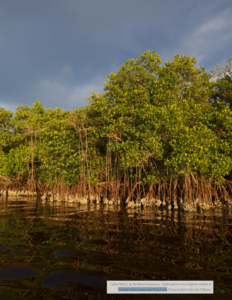Plus, the fight against forced green energy, erosion
 The Biden Administration unveils a heat protection plan for workers, a 19-state coalition forms to challenge federal green energy transition mandates, and natural shorelines offer a glimmer of hope in the constant battle against erosion of our coastlines. It’s all in this week’s Environmental and Engineering Digest.
The Biden Administration unveils a heat protection plan for workers, a 19-state coalition forms to challenge federal green energy transition mandates, and natural shorelines offer a glimmer of hope in the constant battle against erosion of our coastlines. It’s all in this week’s Environmental and Engineering Digest.
 Federal Heat Protection Plan: The Biden Administration is moving ahead with heat exposure regulations for both outdoor and indoor workers during a summer of record-breaking temperatures. OSHA has released the draft text for the proposed rule, which would be the first federal regulation on heat stress in the workplace. It follows passage of a recent Florida law prohibiting local governments from developing heat rules. The rule requires employers to have heat injury prevention plans, including access to water, shade, rest areas, and more frequent breaks when the heat index hits 80 degrees. Additional breaks and monitoring would be required once the heat index exceeds 90 degrees. These new rules would apply to most private-sector businesses, but not necessarily all state and local government workers, the self-employed, or independent contractors. The rule is now open to public comment before its final review at the White House.
Federal Heat Protection Plan: The Biden Administration is moving ahead with heat exposure regulations for both outdoor and indoor workers during a summer of record-breaking temperatures. OSHA has released the draft text for the proposed rule, which would be the first federal regulation on heat stress in the workplace. It follows passage of a recent Florida law prohibiting local governments from developing heat rules. The rule requires employers to have heat injury prevention plans, including access to water, shade, rest areas, and more frequent breaks when the heat index hits 80 degrees. Additional breaks and monitoring would be required once the heat index exceeds 90 degrees. These new rules would apply to most private-sector businesses, but not necessarily all state and local government workers, the self-employed, or independent contractors. The rule is now open to public comment before its final review at the White House.
![]() Going Against the Green: Florida has joined arms with Texas and 17 other states to challenge federal mandates for a “green energy” transition, filing an official complaint with the Federal Energy Regulatory Commission (FERC). The crux of the issue, according to the coalition, is that states are expected to foot the bill for all the upgrades involved with going green, something many on the 19-state coalition are saying they can’t afford. It’s also considered a federal usurpation of state regulatory agencies. In many cases like Texas, which maintains its own electric grid, greener energy options like solar and wind farms may not cover the energy needed to sustain the population – even though they’re already the fifth largest wind power producer in the world. “Unprecedented control over energy production and distribution is a recipe for disaster,” said Texas Attorney General Ken Paxton, who rallied other Attorney Generals to thwart the energy transition that “drives up costs and reduces the reliability of the resources our nation most needs to flourish.”
Going Against the Green: Florida has joined arms with Texas and 17 other states to challenge federal mandates for a “green energy” transition, filing an official complaint with the Federal Energy Regulatory Commission (FERC). The crux of the issue, according to the coalition, is that states are expected to foot the bill for all the upgrades involved with going green, something many on the 19-state coalition are saying they can’t afford. It’s also considered a federal usurpation of state regulatory agencies. In many cases like Texas, which maintains its own electric grid, greener energy options like solar and wind farms may not cover the energy needed to sustain the population – even though they’re already the fifth largest wind power producer in the world. “Unprecedented control over energy production and distribution is a recipe for disaster,” said Texas Attorney General Ken Paxton, who rallied other Attorney Generals to thwart the energy transition that “drives up costs and reduces the reliability of the resources our nation most needs to flourish.”

Natural Shorelines Make Their Return: Sands seem to be shifting towards natural shorelines for many marine contractors. If you ask Savannah Barry and her colleagues at the Florida Sea Grant, who recently published research highlighting the change in thinking, this is big news for coastal property stewardship and construction. Even a decade ago, most expert thinking still tended towards old-school methods like seawalls and bulkheads – but we’re finding that the solution was right under our noses: things like dunes, native vegetation, rocks and oyster shells that act as natural wave breaks and are cheaper to install with little to no upkeep. Now Barry and other researchers are trying to get this information out to a wider audience of contractors, launching a series of workshops and trainings and an informational website to boot. Strict regulations are currently one of the biggest obstacles for the natural shoreline resurgence. “Permitting for living shorelines can sometimes take longer than permitting for a seawall, and for some people that process can be either too daunting or too frustrating,” Barry said. “But state officials are working hard to improve the rules.”
LMA Newsletter of 7-8-24

